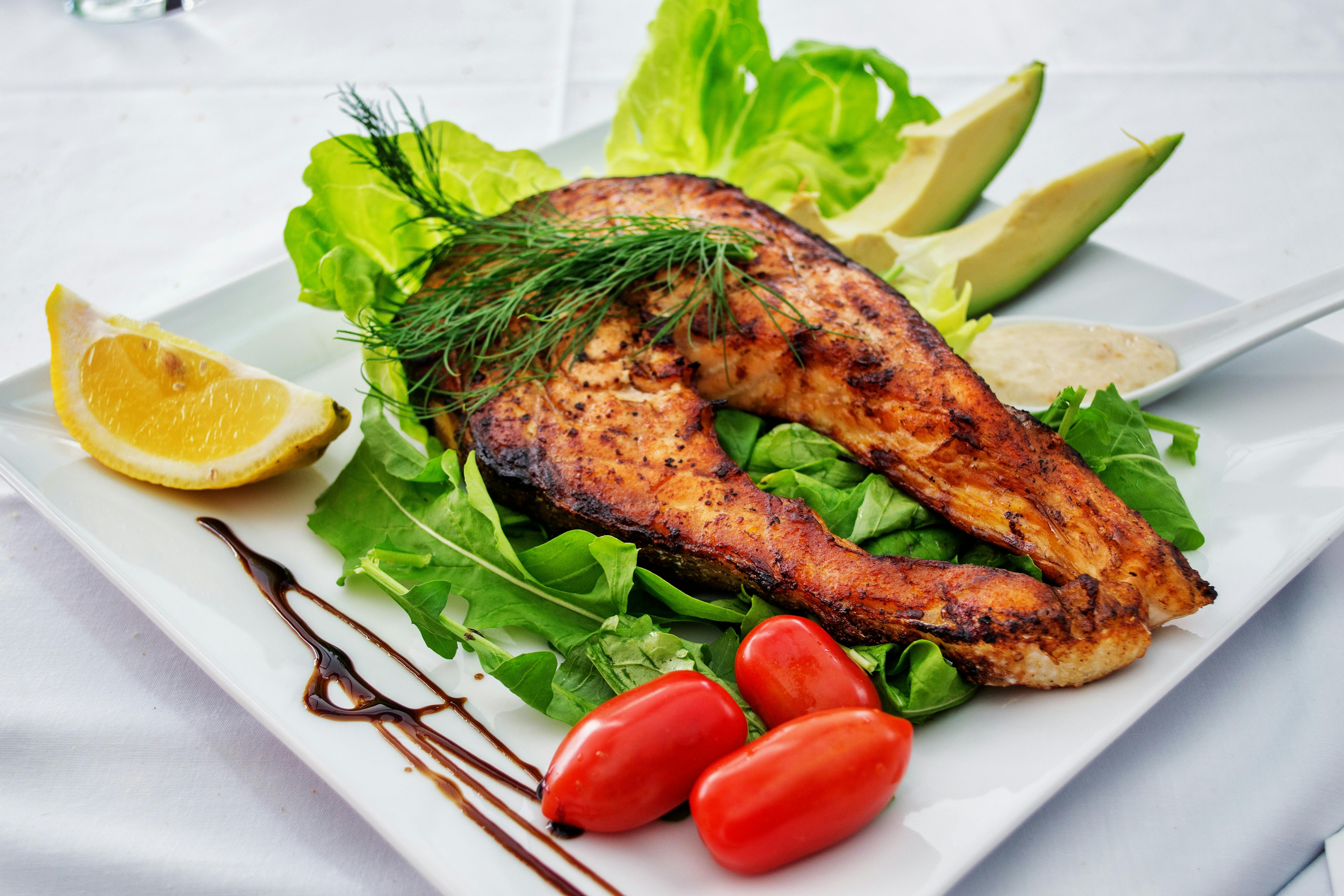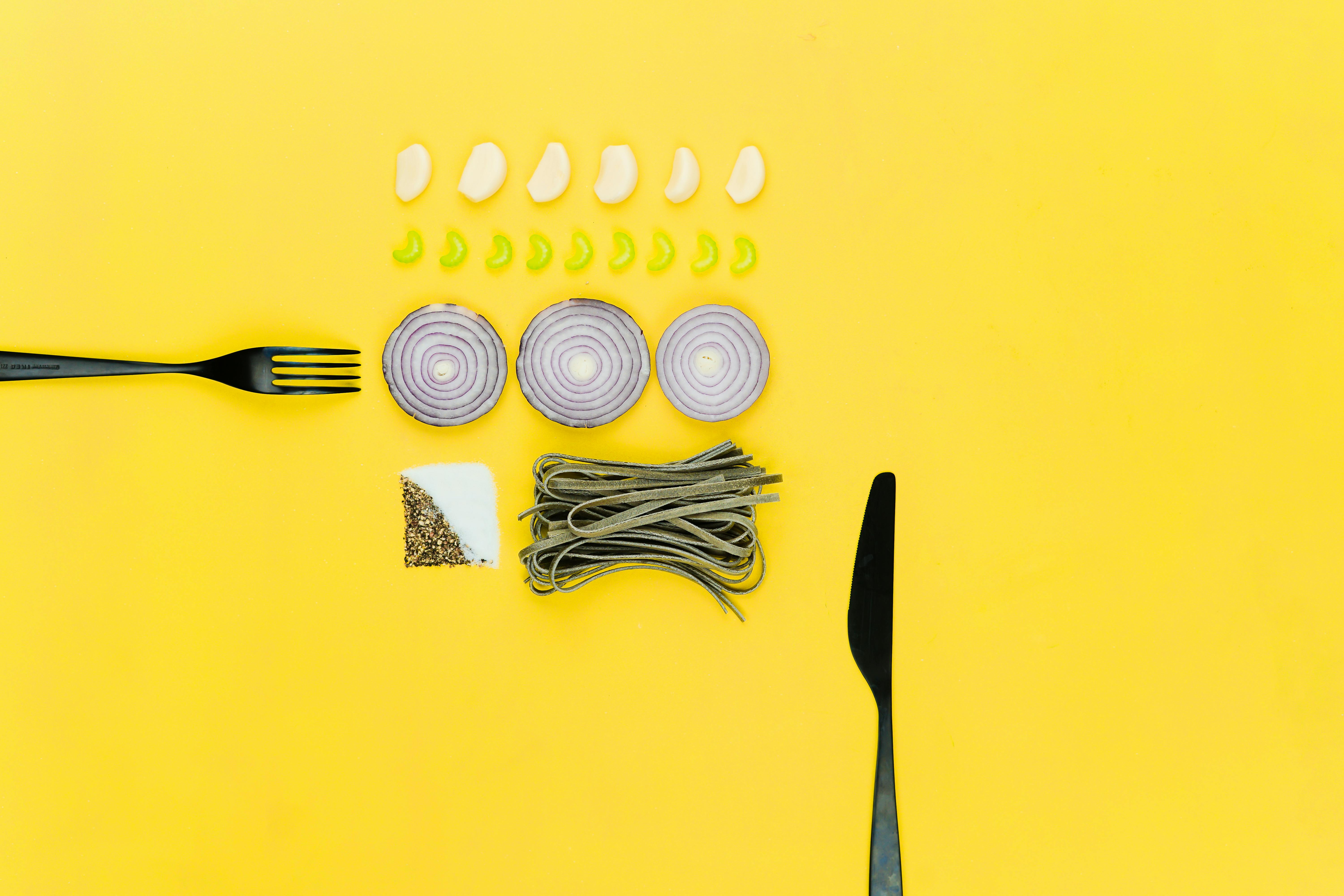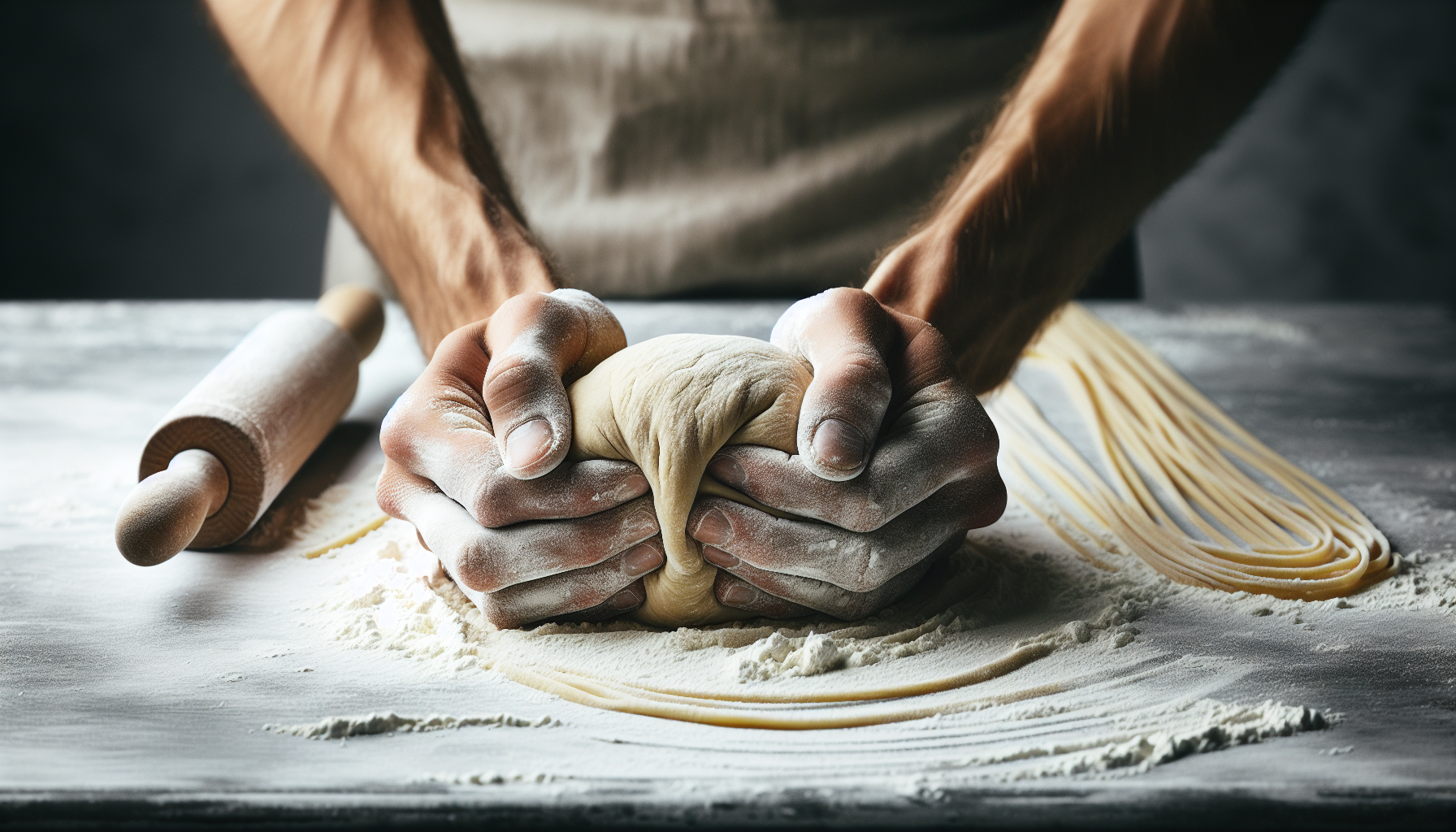Immerse yourself in the artistry of pasta making as you embark on a culinary journey from dough to delicious. Tastepan.com offers an array of tantalizing recipes that will awaken your taste buds and transport you to the flavors of Italy. With carefully curated step-by-step instructions, ingredient lists, and expert tips, you’ll learn the secrets to creating homemade pasta that will wow both your family and friends. So, roll up your sleeves, dust your hands with flour, and get ready to master the art of pasta making like never before.

Choosing the Right Ingredients
When it comes to making pasta from scratch, choosing the right ingredients is key to achieving a delicious and authentic result. Let’s take a look at three essential components: quality flour, eggs and water, and salt and olive oil.
Quality Flour
One of the most important ingredients in pasta dough is the flour. It forms the base of the dough and gives it structure and texture. For the best results, it’s essential to use a high-quality flour, such as Tipo 00 or semolina flour. These flours are finely ground and have a higher protein content, which will provide the necessary gluten formation for a chewy and elastic pasta.
Eggs and Water
Eggs and water are essential for bringing the pasta dough together and adding richness and flavor. While water alone can be used, incorporating eggs adds a lovely golden color and a silky texture to the pasta. The ratio of eggs to flour depends on personal preference and the desired consistency of the dough. Experiment with different ratios to find the perfect balance of flavor and texture.
Salt and Olive Oil
To enhance the overall taste of the pasta dough, it’s important to add a pinch of salt. Salt not only seasons the dough but also strengthens the gluten structure, resulting in a more cohesive and elastic pasta. Additionally, adding a drizzle of extra virgin olive oil to the dough can help keep it moist and prevent it from drying out while resting. It adds a subtle richness to the final dish.
Mixing and Kneading the Dough
Once you have gathered the necessary ingredients, it’s time to mix and knead the dough. This process is critical for developing the gluten and achieving the perfect texture in your pasta. Here’s a step-by-step guide on how to do it right.
Preparing the Work Surface
Before starting, make sure your work surface is clean and well-floured. A generous dusting of flour will prevent the dough from sticking to the surface and make it easier to handle. Clear a large space on your countertop or table and have some extra flour nearby for dusting as needed.
Combining Flour and Liquid
In a large mixing bowl, combine the flour with the eggs and water. Start by creating a well in the center of the flour and gradually pour in the liquid. Use a fork or your hands to gradually incorporate the flour into the liquid until a shaggy dough forms. Once most of the flour has been incorporated, transfer the dough onto the floured work surface.
Kneading Techniques
Now it’s time to knead the dough. Kneading helps develop the gluten, which gives pasta its elasticity and chewy texture. Start by pushing the dough away from you with the heel of your hand, then fold it over and repeat the motion. Continue kneading for about 8-10 minutes, or until the dough becomes smooth and springs back when lightly pressed.

Resting and Preparing the Dough
After kneading the dough, it’s important to rest it to allow the gluten to relax and the dough to become more pliable. Follow these steps to properly rest and prepare the dough for rolling and shaping.
Forming a Ball
Shape the kneaded dough into a ball by tucking the edges underneath and rolling it on the work surface with the palms of your hands. This creates tension and helps the dough hold its shape during the resting period. Place the ball of dough back in the mixing bowl and cover it with a clean kitchen towel or plastic wrap.
Wrapping and Resting the Dough
To prevent the dough from drying out, it’s crucial to wrap it tightly in plastic wrap or place it in a sealed plastic bag. Let the dough rest at room temperature for at least 30 minutes, or up to an hour. This resting period allows the gluten to relax and the dough to become more flexible, making it easier to roll out.
Dividing and Shaping the Dough
Once the dough has rested, it’s time to divide it into smaller portions and shape it according to your desired pasta shape. Cut the dough ball into quarters and work with one piece at a time, keeping the remaining dough covered to prevent drying. Shape each portion into a flat disc or rectangle before moving on to the rolling process.
Rolling the Pasta
Rolling the pasta dough determines the thickness and shape of your pasta. Whether you’re using a pasta roller or a rolling pin, here are the steps to follow for a successful rolling process.
Choosing the Right Pasta Roller
If you prefer a more hands-on approach, a rolling pin can be used to roll out the dough manually. However, for a consistent thickness and uniform shape, a pasta roller is highly recommended. There are manual and electric pasta rollers available, so choose the one that suits your preferences and needs.
Feeding the Dough Through the Roller
To start rolling the pasta, flatten the dough portion into a small rectangle or oval shape. Set the pasta roller to the widest setting and pass the dough through the rollers. Fold the dough into thirds and repeat the process several times, gradually reducing the width setting each time until you reach the desired thickness.
Adjusting the Thickness
Depending on the pasta dish you’re making, you can adjust the thickness of your rolled pasta. For delicate filled pastas like ravioli or tortellini, a thinner setting is recommended to ensure the pasta doesn’t overpower the filling. Thicker pasta works well for heartier sauces, as it can hold up to robust flavors. Experiment with different thicknesses to find what works best for each type of pasta.

Cutting and Shaping the Pasta
Now that you have rolled out your pasta dough, it’s time to cut and shape it into the desired pasta shape. Here’s how you can achieve various pasta shapes by following some simple techniques.
Choosing the Right Pasta Shape
The shape of your pasta can greatly impact the overall dining experience. From long strands of spaghetti to tiny shapes like farfalle, there is a wide range of pasta shapes to choose from. Consider the sauce or dish you’ll be serving the pasta with and select a shape that complements the flavors and textures.
Cutting the Pasta Strips or Shapes
Using a sharp knife or a pasta cutter, cut the rolled-out dough into the desired width for your pasta strips. For long pasta shapes like spaghetti or fettuccine, cut the strips to your preferred length. If you’re making filled pasta, such as ravioli or tortellini, use a biscuit cutter or a mold to create individual shapes.
Shaping Techniques
Once you have cut your pasta into strips or shapes, they can be left as is or shaped further for added aesthetics or texture. For example, you can twirl long strands of pasta into nests or coil them into small circular shapes. For stuffed pasta, fill each individual shape with a spoonful of filling and carefully seal the edges.
Cooking the Pasta
After all the hard work of making the pasta, it’s time to cook it to perfection. Follow these steps to ensure your pasta is cooked al dente and ready to be enjoyed.
Boiling the Water
Fill a large pot with water and bring it to a rolling boil. Add salt to the water, allowing it to dissolve before adding the pasta. The pasta needs enough space to move freely, so make sure to use a pot that is large enough to accommodate the amount of pasta you are cooking.
Adding Salt and Oil
Once the water reaches a rolling boil, add a generous amount of salt to enhance the flavor of the pasta. Adding oil is optional but can help prevent the pasta from sticking together. However, if you plan to toss the cooked pasta with a sauce right away, it’s best to skip the oil, as it can make the sauce slide off the pasta.
Cooking Times
Cooking times can vary depending on the thickness and shape of the pasta, as well as personal preference. It’s crucial to cook the pasta al dente, which means it should be tender but still have a slight bite to it. Follow the instructions on the packaging as a general guideline, but don’t be afraid to taste the pasta a minute or two before the recommended cooking time to achieve the desired texture.
Creating Delicious Sauces
Now that you have mastered the art of making pasta, it’s time to pair it with delicious sauces that will elevate its flavors even further. Here are a few classic sauce recipes to get you started.
Classic Tomato Sauce
To make a classic tomato sauce, start by sautéing onions and garlic in olive oil until fragrant. Add canned crushed tomatoes, a pinch of sugar to balance the acidity, and dried herbs such as basil and oregano. Simmer the sauce for about 30 minutes to allow the flavors to develop. Season with salt and pepper to taste, and finish with a drizzle of extra virgin olive oil.
Creamy Alfredo Sauce
For a rich and creamy Alfredo sauce, melt butter in a saucepan over low heat. Add minced garlic and cook until fragrant. Gradually whisk in heavy cream and grated Parmesan cheese until the sauce thickens. Season with salt, pepper, and a pinch of nutmeg for a touch of warmth. Toss the cooked pasta in the sauce, adding a ladleful of pasta cooking water if needed to loosen the sauce.
Pesto and Other Herb-Based Sauces
Pesto sauce is a vibrant and flavorful option for pasta. In a food processor, blend fresh basil leaves, garlic, pine nuts, Parmesan cheese, and extra virgin olive oil until smooth. Add a squeeze of lemon juice for brightness, and season with salt and pepper to taste. Toss the cooked pasta with the pesto sauce, adding a splash of pasta cooking water to coat the pasta evenly.
Pairing Pasta with the Perfect Sauce
Matching the right pasta shape with the perfect sauce can make all the difference in your culinary creations. Here are a few tips to help you find the ideal pairing for your pasta.
Matching Pasta Shapes and Sauces
Long, thin pasta shapes like spaghetti or linguine pair well with smooth and light sauces, allowing the sauce to fully coat the strands. Hearty meat sauces or chunky vegetable sauces are best paired with tubular or ridged pasta shapes that can hold the sauce within their nooks and crannies. Stuffed pastas, such as ravioli or tortellini, are versatile and can be paired with a variety of sauces depending on their filling.
Texture and Flavor Combinations
Consider the texture of the pasta and the sauce when creating a pairing. Delicate, thin pastas work well with delicate sauces, while thicker, more robust pasta shapes can handle heavier, bolder sauces. The flavors of the pasta and the sauce should complement and balance each other, creating a harmonious dish. For example, a light lemony pasta sauce pairs beautifully with a delicate angel hair pasta.
Experimenting with Unique Pairings
Don’t be afraid to venture beyond traditional pairings and experiment with unique combinations. Mixing different pasta shapes and sauces can create exciting new flavor combinations and textures. Try pairing a creamy carbonara sauce with twisted gemelli pasta or a zesty arrabbiata sauce with bowtie-shaped farfalle for a fun twist on classic dishes.
Tips and Tricks for Perfect Pasta
To take your pasta-making skills to the next level, here are some tips and tricks to help you achieve perfect results every time.
Perfecting the Consistency of the Dough
The consistency of the pasta dough is crucial for achieving the desired texture in the final dish. If the dough feels too dry or crumbly, gradually add small amounts of water until it comes together. Conversely, if the dough feels too sticky, sprinkle a bit of flour and knead it in until the dough becomes smooth and manageable. It’s all about finding the right balance.
Avoiding Pasta Sticking
To prevent your freshly rolled and cut pasta from sticking together, lightly dust it with flour or cornmeal. Gently separate the pasta strands or shapes after cutting to ensure they don’t clump together. If you’re not cooking the pasta immediately, hang it on a pasta drying rack or lay it out on a floured baking sheet to dry slightly before cooking.
Enhancing the Flavor with Seasonings
While the basic pasta dough relies on a few key ingredients, you can enhance the flavor by adding various seasonings to the dough itself. Consider incorporating dried herbs like basil or oregano, spices like chili flakes or garlic powder, or even vegetable powders like spinach or tomato powder. These additions can infuse the pasta with additional flavor and give it a unique twist.
Storing and Reheating Pasta
If you have leftovers or want to prepare pasta in advance, knowing how to store and reheat it properly is essential to maintain its texture and flavor. Here are some guidelines to follow.
Proper Storage Techniques
To store cooked pasta, allow it to cool completely and then transfer it to an airtight container. Keep it refrigerated and consume it within 2-3 days. It’s best to store the pasta separately from any sauce to prevent it from becoming soggy. If you’re storing uncooked pasta, make sure it is completely dry before transferring it to an airtight container or a sealed bag.
Reheating Methods
When reheating pasta, be mindful not to overcook it, as it can become mushy. The best way to reheat pasta is to place it in a pot of boiling water for just a minute or two, until it is heated through. Alternatively, you can use a microwave, but make sure to cover the pasta and stir it occasionally to distribute the heat evenly.
Avoiding Overcooking
To prevent overcooking your freshly made pasta, make sure to keep an eye on the cooking time and check for doneness by tasting a small piece. Remember that pasta continues to cook slightly even after it has been drained, so it’s better to err on the side of undercooking, especially if you plan to cook it further in a sauce.
In conclusion, making pasta from scratch is a rewarding process that allows you to create delicious and authentic dishes right in your own kitchen. By choosing the right ingredients, mastering the mixing and kneading techniques, rolling and shaping the pasta, cooking it to perfection, and pairing it with the perfect sauce, you can elevate your pasta-making skills to new heights. With a little practice and experimentation, you’ll soon be impressing your family and friends with your homemade pasta creations. So, gather your ingredients, roll up your sleeves, and embark on a culinary adventure in the art of pasta-making!

